theintention
Headphoneus Supremus
I ended up ordering the titanium version@theintention , I am guessing that this might be yours, ready to go.
https://www.instagram.com/p/C6Vf5IrvXkD/?img_index=1

Soon hopefully, it’s been about 20 days!
I ended up ordering the titanium version@theintention , I am guessing that this might be yours, ready to go.
https://www.instagram.com/p/C6Vf5IrvXkD/?img_index=1

Guess it is someone else's order.I ended up ordering the titanium version
Soon hopefully, it’s been about 20 days!
Thank you for the description. Which wood or metal did you choose?Am wowed by the Miroak-ii ever since I have had it. I don't do burn-in, just keep hearing it and let it do naturally. Not really seen much changes in most iems I have had so far (at least something so noticeable that I went whoaaa). But this is now happening with the Miroak-II. I use divinus velvet tips and Hiby M300 as the dap source.
In particular, the soundstage. I had described it as intimate on first listens, but of late, it has widened in width and depth considerably. It's not completely huge, but has definitely widened and also in depth. And just the way it renders everything now in the staging and separation, been an absolute pleasure.
This was a post in another thread I had written after a first few days. Will drop it here
--
It's romantically organic smooth sound. Lush full-bodied mids that tend to shower notes; warm bassy but with enough bite and note weight. Posh!
Bass is quality textured, and continues to surprise at how well it's done. Has a nice slam. Not those bloomy muddy bass. The Jap sauce of melody and physicality!
The posthumous lingering of notes is rather neat; doesn't overstay nor flee too soon.
Not bright. That's the domain of new models loak tx01 and tx03 I gather. So if you wish bright and bassy they are the way to go.
The soundstage is cosy, not large nor cramped but separation of notes is v good and so it renders busy stuff rather well. And the organic warmness suits heavy low-end rumbling doom music. Prog and Dub.
It scales really well with high volumes without any distortion and I guess, it will do even better with propah amplification. Overall pretty posh sound!
--
All else stands, except I won't limit the soundstage as just 'cosy' now.
If I remember correctly, he went with padouk.Thank you for the description. Which wood or metal did you choose?
If I remember correctly, he went with padouk.

If I remember correctly, he went with padouk.
Thank you! I’m trying to decide which material to get, so it really helps to get detailed impressions on specific woods to set a baseline for comparison.Yes! Padouk indeed

For your referenceThank you! I’m trying to decide which material to get, so it really helps to get detailed impressions on specific woods to set a baseline for comparison.


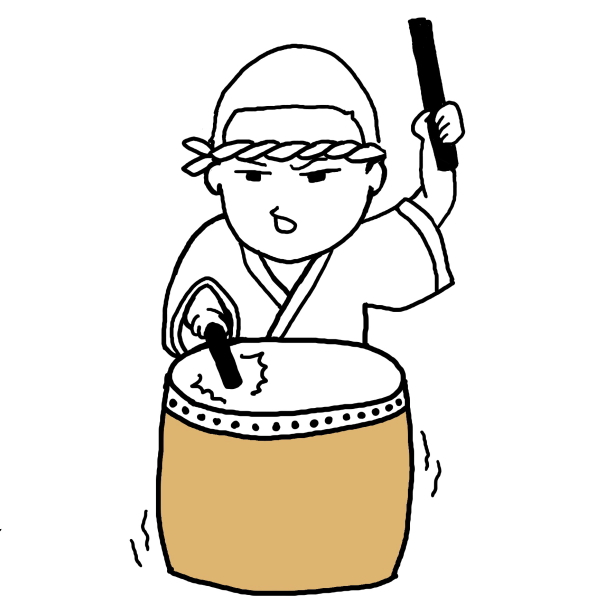
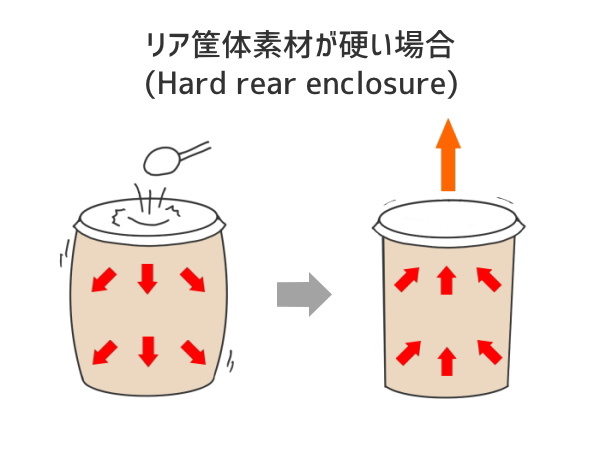
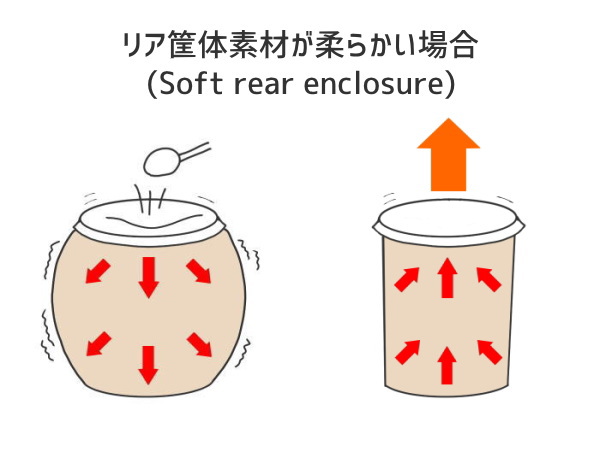
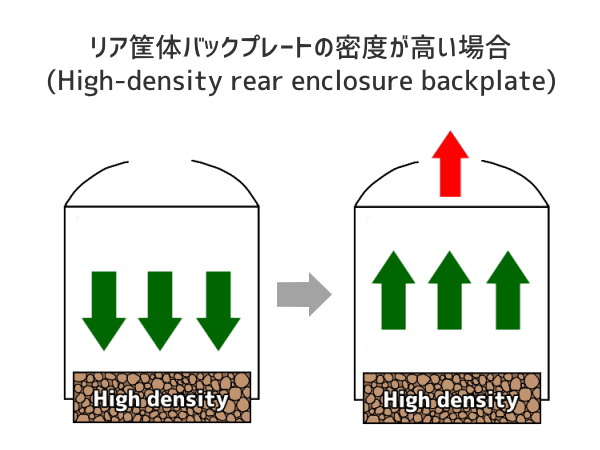
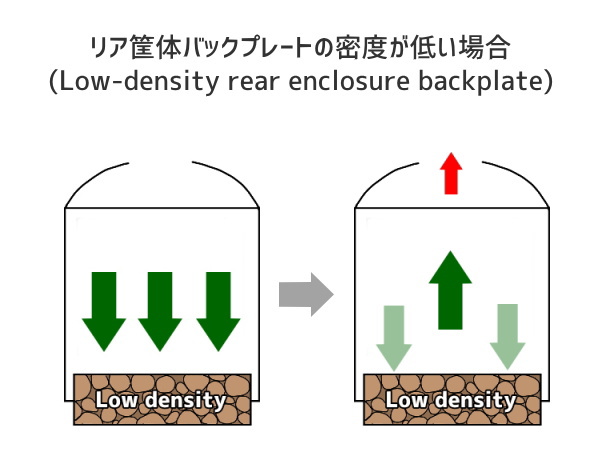
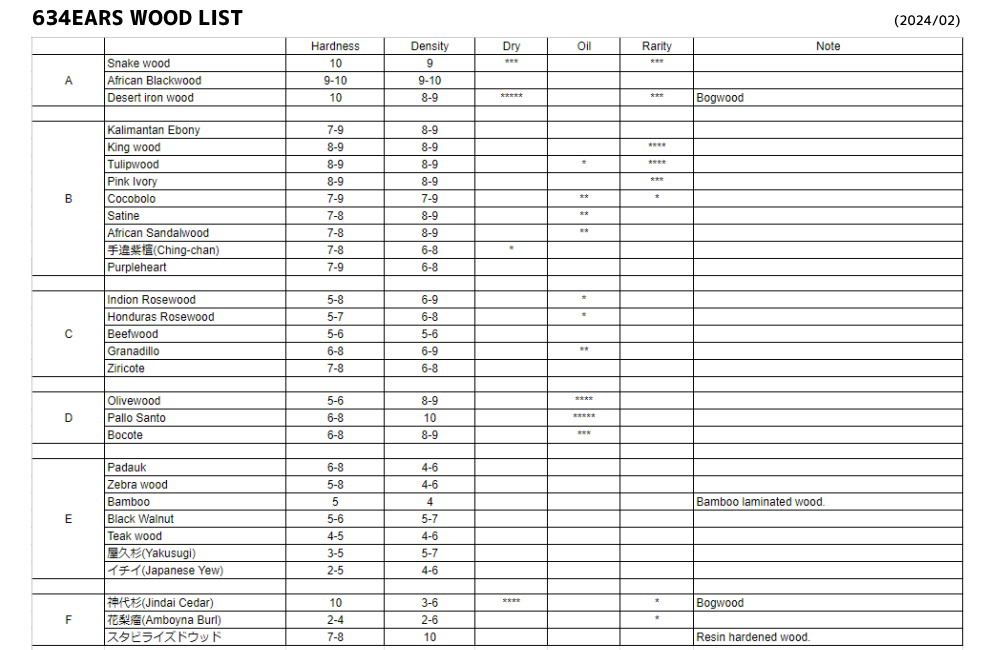
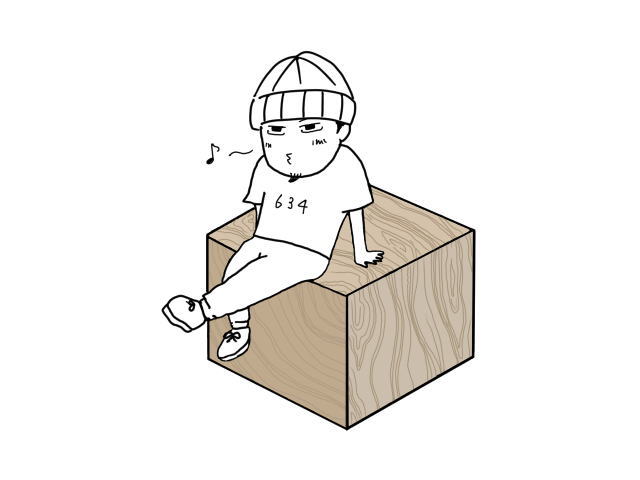

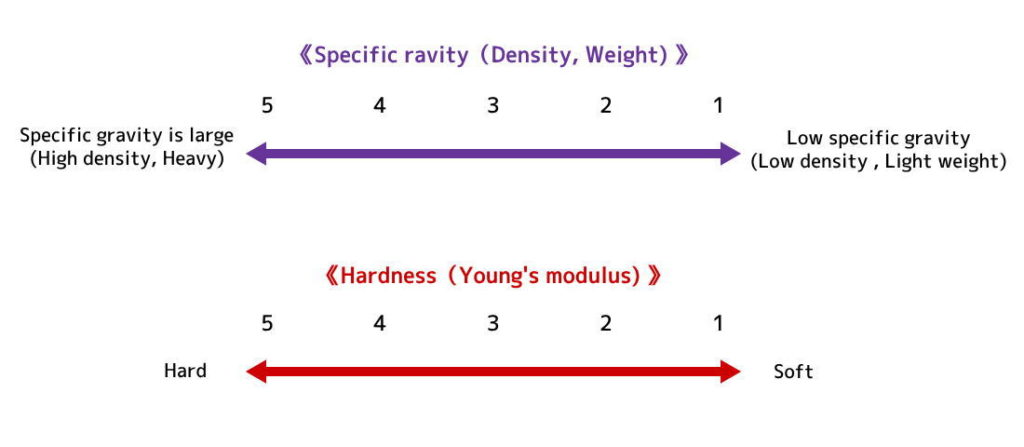
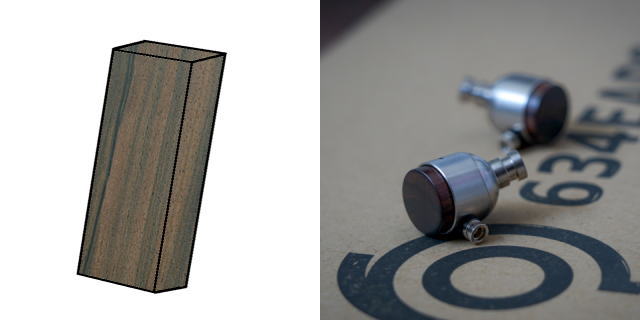
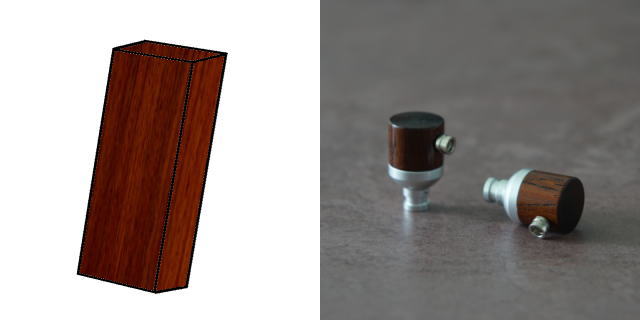








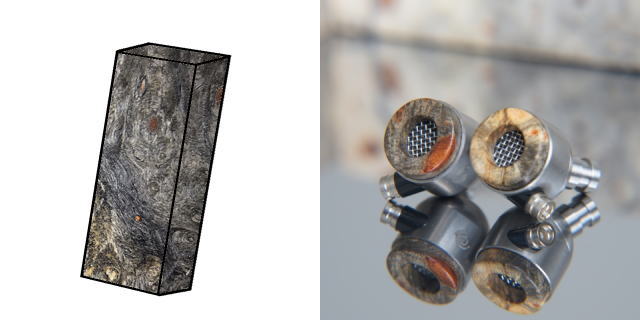
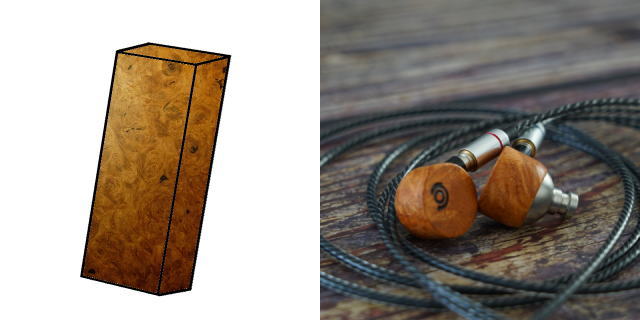
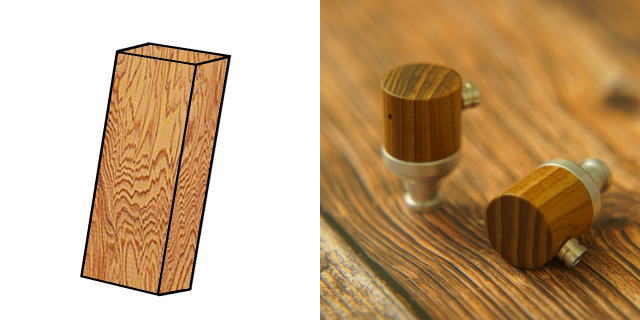

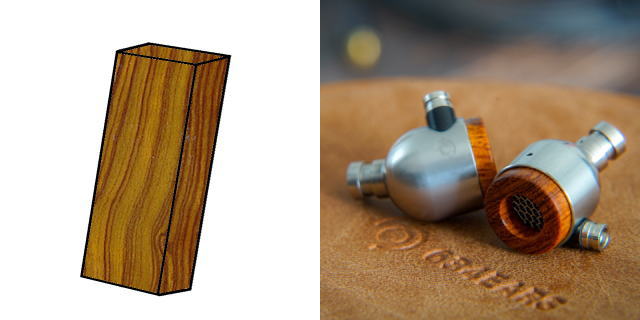
Wow, thanks! That’s immensely helpful, especially combined with the user impressions.For your reference
https://blog.634ears.com/en/blog/202402-wood1/
Selecting wood (material) for the rear enclosure – Part 1
Let me explain again about the difference in sound based on the selection of wood or metal for the backplate of the rear housing, as I have mentioned several times before.
The materials for the backplate are very diverse, and wood varies from piece to piece. Therefore, instead of individually discussing each piece of wood, I believe it’s easier to understand how the sound changes based on the hardness and density of the material.
To begin with, it’s important to understand the basic role of the rear housing.
Role of the Rear Housing:
The housing of earphones is divided into front and rear by the dynamic driver.
This time, I will explain about the rear housing behind the driver.

The interior of the rear housing plays a role similar to a spring, moving the diaphragm by the air inside the housing, and by compressing and rebounding the air inside the rear housing due to the movement of the diaphragm, it affects the degree of movement of the diaphragm.
I often liken the rear housing to instruments like drums or percussion. The diaphragm is like the drum head, and the drum shell (body) is like the side walls of the rear housing, while the bottom is akin to the backplate.


Now, what kind of changes in movement would occur in the diaphragm depending on whether the rear housing material is “hard,” “soft,” “high density,” or “low density”?
Hard Material:
If the rear housing material is hard, the material of the housing does not deform due to the pressure of the air inside the rear housing when the diaphragm moves, so the air rebounds quickly and sharply.
As a result, the diaphragm moves quickly and finely. This kind of diaphragm movement makes it easier to produce tight, high-resolution, clear sounds with a fast attack and precise contours.

Soft Material:
If the rear housing material is soft, the material of the housing is easily deformed by the pressure of the air inside the rear housing when the diaphragm moves, so the air rebounds slowly and gently.
Consequently, the diaphragm moves slowly and broadly. This kind of diaphragm movement tends to produce thicker sounds, particularly enriching the mid to low range. However, compared to hard materials, the contours of the sound might be less sharp, giving a slightly softer impression.

High Density:
If the rear housing material has high density, it strongly rebounds against the pressure of the air inside the rear housing when the diaphragm moves. This means that the spring of the air inside the rear housing becomes stronger.
Therefore, the diaphragm moves strongly and broadly. This kind of diaphragm movement tends to increase the sound pressure, resulting in powerful sounds. However, it also tends to produce more pronounced attacks and peaks.

Low Density:
If the density inside the rear housing is low, some of the pressure of the air inside the rear housing is absorbed by the material when the diaphragm moves, reducing the air rebound. This means that the spring of the air inside the rear housing becomes weaker.
Therefore, the diaphragm moves gently and slightly. This kind of diaphragm movement makes it easier to produce soft and gentle sounds. As a result, the sound pressure is restrained, especially the bass tends to be more subdued.

Comparative List of Wood Hardness and Density:
Taking these into account, let’s look at the list of woods commonly used in 634EARS, which are rated for hardness and density on a scale of 1 to 10.

*These figures are known at this time and may change in the future.
Until now, I have used the criterion of “specific gravity,” but now I use the criterion of “density” because it is not the same as actual density.
These values are actually quantified based on my own experience and feel of cutting and shaving wood.
In addition, the “Dry” and “Oil” items are described for wood that is particularly dry or oily.
A-E group similar items based on hardness.
F is a special wood (material).
The table is designed to give you an idea of the hardness and density of the wood and how it will sound in comparison to other woods.
Please note:
While the list quantifies the hardness and density of the wood and makes it easier to grasp the sound image, there are some points to consider.
The differences in sound due to hardness and density are only applicable when compared to “other woods.”
For example, using Snakewood, which has a hardness of 10, does not necessarily mean that it will exhibit the characteristic sound of hard woods (high resolution, clear, sharp, tight).
It means that compared to woods with hardness ranging from 7 to 9, such as Cocobolo, it will have a sound characteristic of harder woods.
Therefore, the sound tendency of the wood alone cannot be clearly understood since it depends on the base earphones and individual perceptions. It can only be used as a guide to compare what kind of sound it will produce compared to other woods.
So, it’s not possible to answer the question, “What kind of sound does this wood produce?” Instead, it’s possible to answer questions like, “If this wood is used in a headphone called XYZ, how does it compare to Indian Rosewood in terms of sound?”
This was the most basic explanation, so next time, based on this, I would like to delve a little deeper into the explanation.

https://634ears.com/blog/wood-eng/
1) About the wood of the earphone enclosure.
Many models of 634EARS earphones use wood.
The sound of the earphones changes slightly depending on the type of wood. That is very interesting.
1-1)Pros and cons of using wood.
Wood has individual differences even in the same type of wood.
This means that 100% of the sound will not be known until the earphones are completed.
This is also a disadvantage.
However, the individual differences will make your earphones unique to you in this world.
This is one of the great pleasures and advantages in enjoying earphones.
1-2) Important notice.
This page briefly describes the differences between woods, but what is written here is not 100% correct because of individual differences in woods.
Please understand this and use it as a “reference” for your wood selection.
2) Differences in Sound by Wood.
2-1) Specific Gravity & Hardness
The specific gravity and hardness of the wood mainly affect the sound of the earphones.
Here are some examples
Specific gravity (Density, Weight)
Hardness (Young’s modulus)
However, it is not possible to express a fixed number for one type of wood because of individual differences in wood.
The hardness and weight will vary depending on the dryness of the wood and the oil content.
Also, the method of measuring specific gravity and hardness is not 100% accurate, as the standards are ambiguous.
Therefore, specific gravity and hardness values should be used only as a reference.
2-2) How much difference does the choice of wood make to the sound of the earphones?
The percentage of wood used in earphones is about 10%-50% of the total earphones. This varies depending on the earphone model.
It is important to note that changing the wood will not significantly change the sound of the earphones.
However, the choice of wood will change about 10-20% of the earphone’s sound.
10-20% of the total is a very large number.
Your choice of wood will make the earphones sound the way you like.
2-3) Sound Tendency by Wood.
The sound of wood cannot be quantified. Therefore, it is very difficult to simply describe the sound.
However, there are some general trends.
Specific gravity (Density, Weight) is higher, which tends to produce a stronger, denser, heavier sound.
Hardness Harder (Young’s modulus) tends to produce a tighter, edgier sound.
2-4) Sound characteristics of each wood.
For each wood description, specific gravity and hardness are expressed in five levels.
The higher the number, the higher the specific gravity and the harder the wood.
Lower values are lighter and softer.

Let us now describe each wood.
1) Karimantan Ebony
2) Indian Rosewood
3) Snake wood
4) African blackwood
5) Cocobolo
6) Granadillo
7) Olive wood
8) Pink Ivory
9) Ziricote
10) Purpleheart
11) Beef wood
12) Buckeye Burl
13) Amboyna Burl
14) Yakusugi
15) Stabilized wood
16) Desert iron wood
Other woods
1) Karimantan Ebony
Specific gravity(Density, Weight) : 5
Hardness(Young’s modulus) : 4
The sound is thick and strong. It is a little oily.

2) Indian Rosewood
Specific gravity(Density, Weight) : 4
Hardness(Young’s modulus) : 3
A little warm sound. It has a wood-like resonance.

3) Snake wood
Specific gravity(Density, Weight) : 5
Hardness(Young’s modulus) : 5
This is one of the hardest woods.
Bright and tight sound. Clear sound.

4) African blackwood
Specific gravity(Density, Weight) : 5
Hardness(Young’s modulus) : 5
High contrast sound. It has a deep and strong sound.

5) Cocobolo
Specific gravity(Density, Weight) : 5
Hardness(Young’s modulus) : 4
Cocobolo is a wood with high oil content.
The sound is high in contrast, but a little subdued.
It has a slightly warm sound.

6) Granadillo
Specific gravity(Density, Weight) : 4
Hardness(Young’s modulus) : 4
The sound has warmth.
It has an analog-like sound. Calm and coherent sound.

8) Pink Ivory
Specific gravity(Density, Weight) : 5
Hardness(Young’s modulus) : 4
Very beautiful vermilion color. Smart and beautiful sound.

9) Ziricote
Specific gravity(Density, Weight) : 4
Hardness(Young’s modulus) : 4
Sharp and light sound. It has a sharp sound.

10) Purpleheart
Specific gravity(Density, Weight) : 4
Hardness(Young’s modulus) : 4
This is a deep and heavy sound. Recommended for models with strong bass.

11) Beef wood
Specific gravity(Density, Weight) : 4
Hardness(Young’s modulus) : 4
The sound is light and crisp. It is similar to Ziricote, but a little lighter.

12) Buckeye Burl
Specific gravity(Density, Weight) : 1
Hardness(Young’s modulus) : 1
Very soft wood. It is like cork. Mild and soft sound.
Individual differences are very large.

13) Amboyna Burl
Specific gravity(Density, Weight) : 2
Hardness(Young’s modulus) : 3
Soft sound. Individual differences are very large.
Individual differences are large in all of the burl woods.

14) Yakusugi
Specific gravity(Density, Weight) : 2
Hardness(Young’s modulus) : 3
Very light and smart sound.
It lacks power, but the sound is crisp. Pleasant bouncy sound.

15) Stabilized wood
Specific gravity(Density, Weight) : ?
Hardness(Young’s modulus) : ?
This material is closer to resin than wood.
It has a deep sound, but the tone is a little dark.

16) Desert iron wood
Specific gravity(Density, Weight) : 5
Hardness(Young’s modulus) : 5+
Desert iron wood (bog-wood).
It is hard like a fossil. Very tight and smart sound.

Other woods)
There are many other woods, but it will be easier to imagine the sound if you check the specific gravity and hardness of the wood and compare it to the woods listed here.
Now that you know a little bit more about wood, how do you choose the right wood for your earphones?
No matter how much you learn about wood in advance, you will not know 100% of the sound until the earphones are completed, so it is a good idea to select wood based on both sound and appearance.
Wood is sometimes used for musical instruments, speakers, and headphones, but since earphones are so small, wood that cannot be used for those can be used for earphones. Therefore, there are many choices.
I hope you will enjoy selecting the wood that will be used for the housing of your earphones.



Went with Miroak 2 using Antique Silver Brass on the back!
Been holding off for weeks on wanting one, but I decided to give in.
CongratulationsWent with Miroak 2 using Antique Silver Brass on the back!
Been holding off for weeks on wanting one, but I decided to give in.
You don't say, checking in everyday on his instagram. And get a little disappointed when his new post is not my unitCongrats! The wait begins!
Loooool I do the same thing like 8 times a day.You don't say, checking in everyday on his instagram. And get a little disappointed when his new post is not my unit

